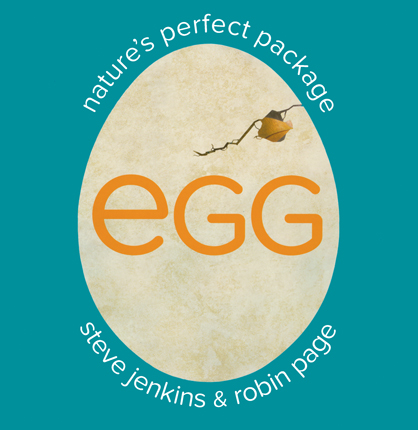Full Text Reviews: Booklist - 12/01/2014 This attractive volume looks at animals that lay eggs, the qualities of those eggs, and how the parents protect, package, carry, and incubate them. Presented on two-page and four-page spreads, each topic begins with a brief discussion, several pictures showing different species, and informative captions. This approach offers a sense of the many, varied, and sometimes surprising ways that species have developed to deal with common issues. For example, where do they lay their eggs? Yes, a nest (cowbird) is one option. But so is a bare branch (white tern), water (horned starfish), a carnivorous pitcher plant (black-spotted sticky frog), or a spider’s abdomen (spider wasp). Near the end of the book, parallel panels of illustrations show a chicken and an alligator developing inside their respective eggs. Created from cut and torn papers with interesting coloration and textures, Jenkins’ distinctive illustrations show up well against the white backgrounds. This intriguing presentation will be an asset to many kindergarten and primary-grade classes. - Copyright 2014 Booklist. Bulletin for the Center... - 04/01/2015 Jenkins and Page’s new natural history outing focuses on that key player in reproduction, the egg. The book refreshingly notes from the start that “almost every animal” begins with an egg, with some growing inside the mother’s body and some outside, and then goes on to a glorious exploration of the oval experience. Spreads display captioned thumbnails treating various egg layers, offering insight into egg sizes and how they don’t always correlate to adult size, describing threats to eggs and protections for eggs, and, of course, busting out of eggs. By using the egg itself as a focal point the authors shift perspectives, putting squid, spiders, chickens, and alligators suddenly all on the same plane and, literally, starting from the same place. The result is a fascinating lesson on unexpected sameness and intriguing difference, with a sequence that’s both browsable and readable. Jenkins’ cut-paper illustrations are particularly vibrant here, the broad remit allowing for dramatic display from various taxonomical orders so that audiences are treated to the plumage of the toucan and the showy shades of the weedy seadragon; poses suggest candid mid-action snaps. Though the title is not glitch free (why, for instance, isn’t the mother platypus shown in the incubation position described in the text?), it’s an engaging step up from Aston’s An Egg Is Quiet and a thoughtfully original look at a key stage of the animal world, and readers will realize that you can’t make animals or omelettes without breaking eggs. A concluding spread offers more information about the animals featured. DS - Copyright 2015 The Board of Trustees of the University of Illinois. School Library Journal - 04/01/2015 Gr 2–4—Jenkins and Page present a collection of facts about animals and their eggs. The layout is divided into spreads that present a different topic ("Where should I lay my eggs?" "Egg Packaging") in an introductory paragraph. That's followed by several examples ("Incubation" describes the male emperor penguin, which keeps eggs warm in a brood pouch), accompanied by beautiful illustrations rendered in Jenkins's trademark cut-and-torn paper collages, scattered across the page, leaving the copious amount of white space characteristic of this team's style. Some cases tend toward the grotesque (readers learn that the spider wasp stings a spider, lays her eggs on its body, and leaves it as food for her hatchlings), but all are presented in a purely scientific, factual tone. A diagram at the beginning of the book gives readers a look at the actual sizes of different eggs (a tarantula's, a leopard frog's, a scorpion fish's). The work concludes with cross-sectional diagrams of chicken and alligator eggs, showing the interior at different stages of development. There's also a list of very brief facts about each of the animals pictured. VERDICT Like Jenkins and Page's other works, this delightful purchase combines big, bold illustrations with intriguing science. A solid addition to the 590s.—Jill Ratzan, I. L. Peretz Community Jewish School, Somerset, NJ - Copyright 2015 Publishers Weekly, Library Journal and/or School Library Journal used with permission. Loading...
|



